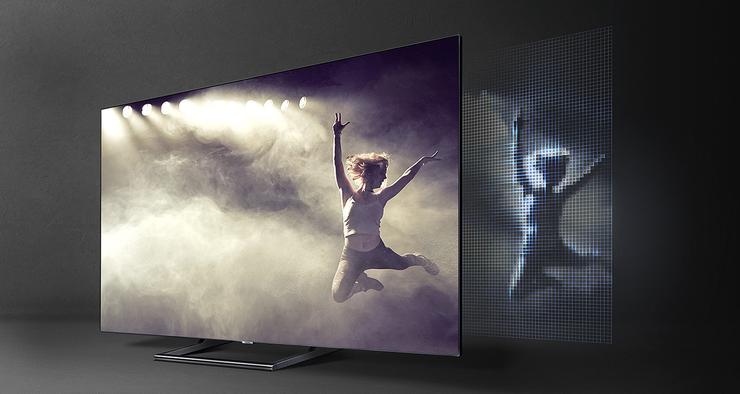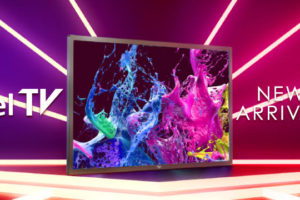A smart TV is a traditional television set with integrated Internet and interactive “Web 2.0” features which allows users to stream music and videos, browse the internet, and view photos.
Smart TVs come in many screen resolutions which include 720p, 1080p, 4K among others. In this article, we shall discuss the Smart Tv picture resolution in detail.
What is picture resolution?
The image resolution is the detail an image holds. Higher resolution means more image detail. Image resolution can be measured in various ways. Resolution quantifies how close lines can be to each other and still be visibly resolved.
The resolution, in terms of TV hardware, refers to the number of pixels that compose the picture on the TV. There are numerous resolutions found on smart TVs. Older smart TVs and many 32-inch models have a million or so pixels (720p). More recent and slightly larger TVs (49 inches and smaller) have a little over 2 million pixels (1080p). Even newer and bigger TVs (50 inches and above) have 8 million (for 4K Ultra HD). And the newest and largest TVs have over 33 million pixels (8K).
Just because a TV has a higher resolution than another, doesn’t mean it is better. It might, but not always, and for reasons that have little to do with resolution. A TV with better high dynamic range (HDR) performance, a better overall contrast ratio or better color will produce better pictures than one that just has more pixels.
See Also: 5 must-have features to look out for before buying a smart TV
Here are the various resolutions common on smart TVs:
| Resolution Name | Pixels | Related name | Device |
|---|---|---|---|
| 8K | 7,680x4,320 | 8K UHD | TVs |
| Cimema 4K | 4,096x[unspecified] | 4K | Projectors |
| UHD | 3,840x2,160 | 4K, Ultra HD, Ultra-High Definition | TVs, Monitors |
| 2K | 2,048x[unspecified] | None | Projectors |
| WUXGA | 1,920x1,200 | Widescreen Ultra Extended Graphics Array | Monitors, Projectors |
| 1080p | 1,920x1,080 | Full HD, FHD, HD, High Definition | TVs, Monitors |
| 720p | 1,280x720 | HD, High Definition | TVs |
HD Ready TVs (720p)
HD Ready televisions are designed to display content that offers a picture resolution of 720p. The 720p refers to the number of horizontal lines that the TV can show, meaning a full-screen resolution of 1280 pixels wide by 720 high (1280 x 720).
HD Ready TVs cannot display the enhanced picture quality of Full HD 1080p or Ultra HD 4K content due to their maximum resolution being too low.
Full HD TVs (1080p)
Full HD 1080p TVs have the potential to offer greater picture clarity, as they can display footage that has been developed in Full HD resolution. Their resolution is 1920 pixels wide by 1080 high (1920 x 1080).
They are ideal for showing Blu-ray DVDs, Freeview HD, and video games, which are often produced in higher resolution. They cannot display 4K content as their resolution is too low.
2K TVs
This is pretty much just a cinema resolution, which is sometimes referred to as a “master format.” Most digital cinema projectors used in theaters are a 2K resolution (some are less). It’s 2,048 pixels wide and no vertical resolution is specified by the DCI (Digital Cinema Initiatives)
Related Article: 10 most common questions about smart TVs answered
4K Ultra High Definition TVs
4K Ultra HD allows images to be seen in greater clarity, 4K TVs create images using 8.3 million pixels – that’s four times the amount of a Full HD 1080p screen! The effective resolution is 3840 pixels wide by 2160 high (3840 x 2160).
With all these additional pixels making up the picture on your TV screen, the brightness of the colors, the sharpness of the images and the overall clarity of the picture are greatly enhanced.
4K TV models are equipped to display footage that is made in Ultra HD resolution and hence allowing images to be seen in greater clarity. 4K TVs work best for larger screens, where the images can be viewed in more detail.
8K UHD TVs
8K resolution refers to any screen or displays with around 8000 pixels width. 8K UHD, officially also known UHD-2 is the current highest ultra high definition television resolution in digital television, digital cinematography, and digital signage.
Above are the available smart TV picture resolution qualities. However, just to remind you, more pixels doesn’t necessarily mean a better picture. There are other aspects of picture quality, such as contrast and color, that are more important than resolution.
Discover more from Dignited
Subscribe to get the latest posts sent to your email.












